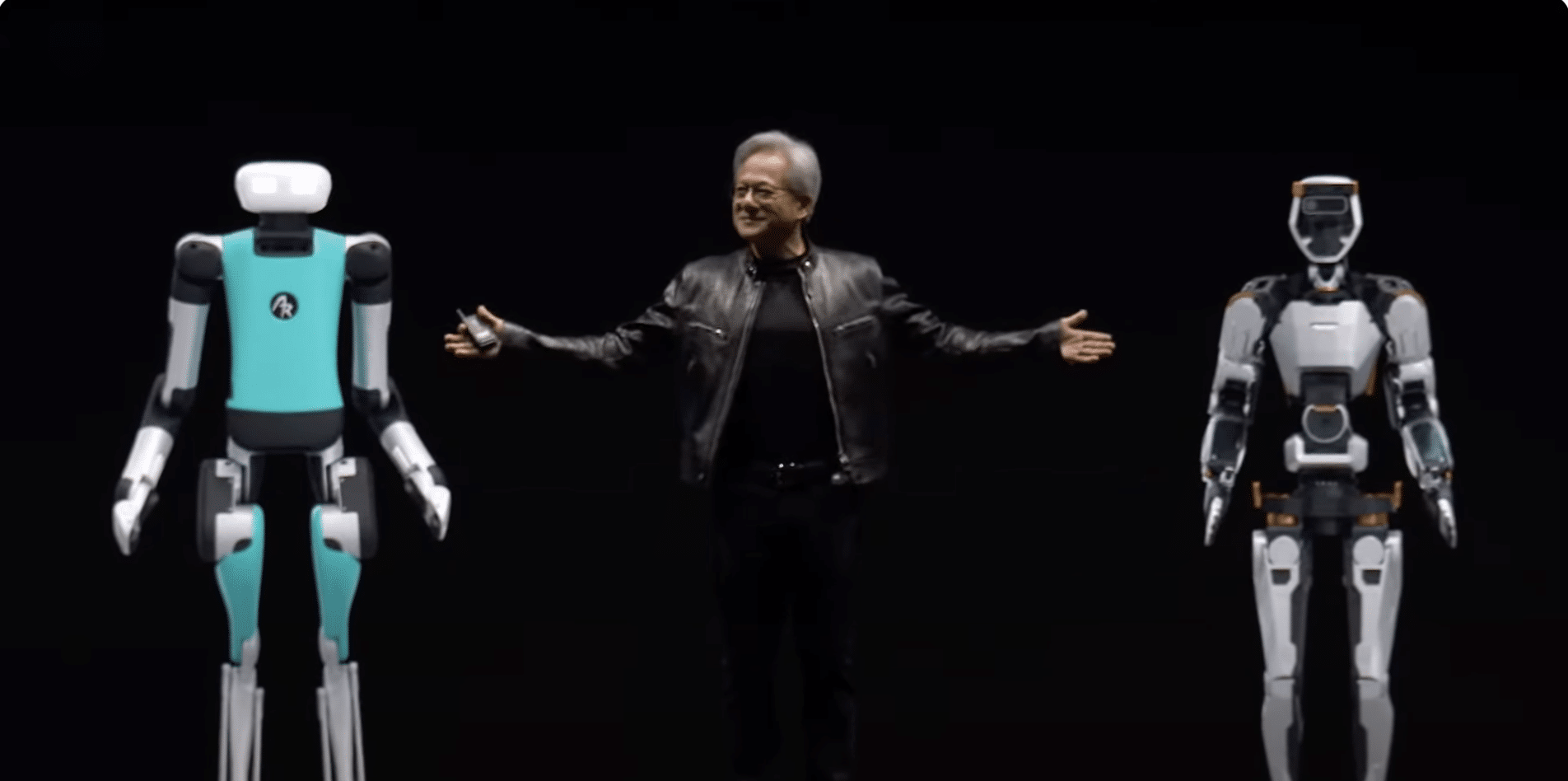Tech firm Nvidia continued to pursue its pivot from hardware producer to artificial intelligence (AI) developer with the debut of its new robot project after the Figure 01 demonstration.
“With advances in generative AI, there has been a steady stream of developments across the ecosystem where foundation models for robotic tasks have shown the ability to improve the productivity and performance of robotics developers,” David Pinto, a senior PR manager at Nvidia, told Fox News Digital.
Nvidia debuted its robot as part of Project GR00T, a major upgrade to Nvidia’s AI initiatives and a significant step deeper into the AI field overall. The project will focus on developing “foundation models,” or generative AI that uses self-supervised learning rather than external instruction or training.
Nvidia CEO Jensen Huang showcased a number of robots, including small knee-high Star Wars-themed Disney robots, at the company’s GTC conference last week. The GR00T, or Generalist Robot 00 Technology system, is built to handle the operation of robots.
“These productivity gains extend from developing code for the robots to generating new simulations to test and train the robots in unstructured environments,” Pinto said.
“For the robotics industry to scale, the robots themselves have to become more generalizable. That is, they need to add skills more quickly or to bring these skills to new environments,” Pinto explained. “Project GR00T is an important initiative in this direction to advance humanoid robots in multiple embodiments.
“The foundation models will make the robots better understand complex environments and execute a breadth of robot skills and tasks in both simulation and real world.”
Pinto did not address concerns over making advances in robots with AI models running their operations even as large language models (LLM) continue to develop issues, such as the ongoing issue with “hallucinations,” in which AI models produce nonsensical results. Pinto did, however, note that “true general-purpose embodied autonomy is further out.”
Nvidia’s robot utilizes a new computer system called Jetson Thor, which is designed to perform complex tasks and interact “safely and naturally with people and machines,” including a “system-on-a-chip” to handle the immense demands on processors to run AI models.
Nvidia first assumed a central role in the space through its chip manufacturing, with countries and companies seeking to buy up all the semiconductor chips and microprocessors on the market following public engagement with ChatGPT and mainstream attention on AI models and platforms.








